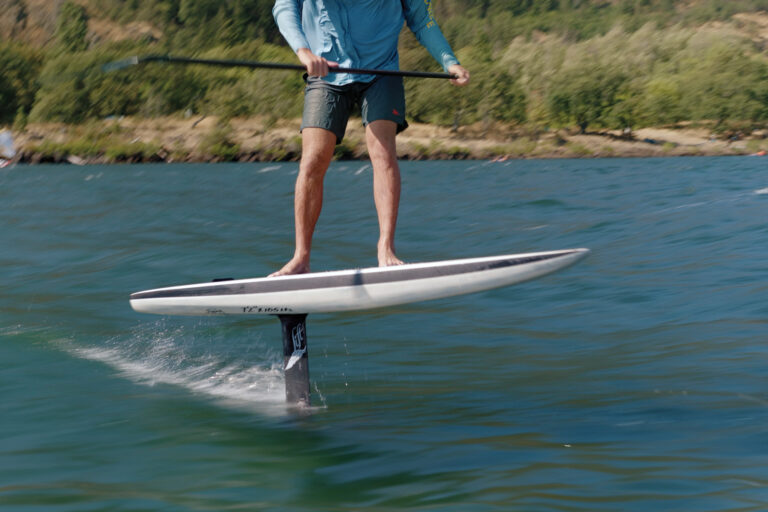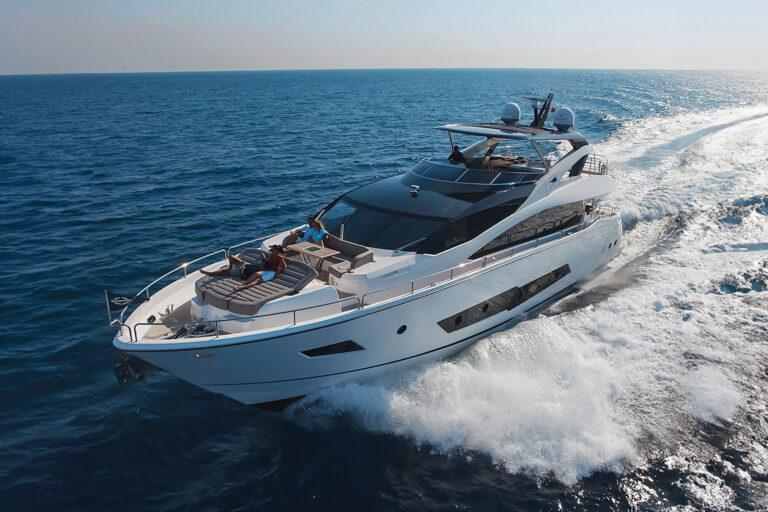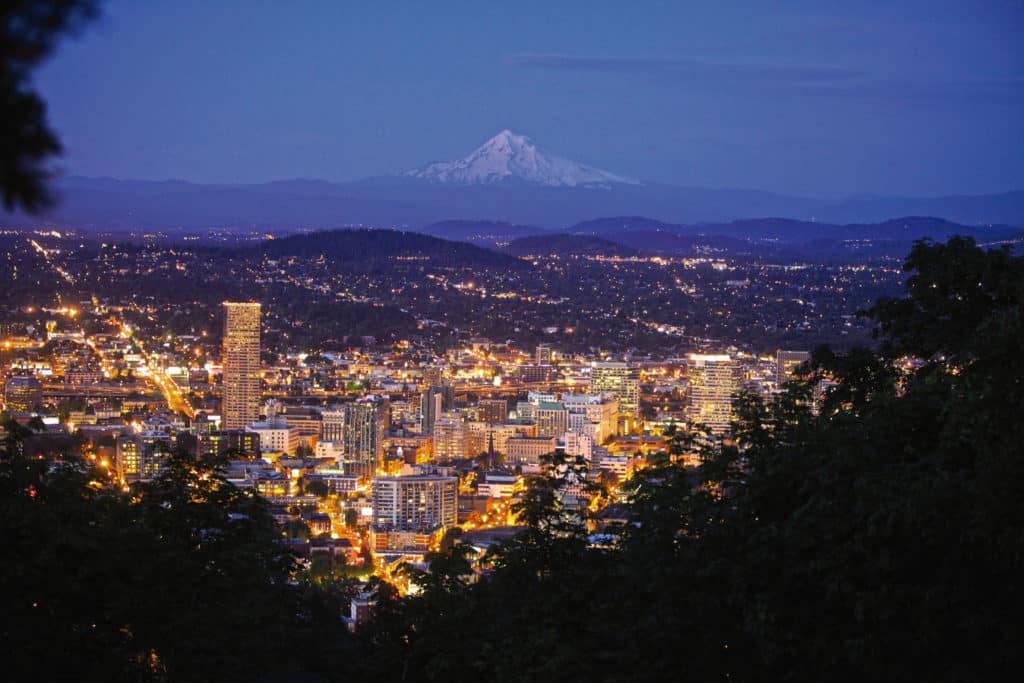
When Tony Fleming told me he was taking a river cruise, I thought he’d lost his thirst for adventure.
Falling off the backs of 20-foot seas in the North Atlantic on our way to Iceland. Navigating the Aleutians’ Unimak Pass as we entered the notorious Bering Sea and headed to Dutch Harbor, Alaska. Hiking to the mountaintop of Robinson Crusoe’s Isla del Coco before making the 400-mile ocean passage to the Galapagos Islands. Now these are the kinds of adventures I’m used to when cruising with the retired boatbuilder aboard his Fleming 65, Venture.
But a river cruise from Portland, Oregon, to Lewiston, Idaho? Was Fleming, now in his 80s, slowing down?
Not a chance. Once I researched the area made famous by Lewis and Clark, I realized this river cruise would be as exciting as our other far-flung voyages, and I signed on as crew.

The plan was to hop on board in Portland, where we would begin a 220-mile trip up the Columbia River, passing through the famously beautiful Columbia River Gorge. We would then reach the Snake River and continue on another 140 miles to Lewiston.
Walking down the ramp leading to the city’s public dock, I was met by Fleming’s captain, Chris Conklin, who has piloted both Venture and Venture II, Fleming’s European-based 65, for the past 10 years. It was good to be aboard again, knowing a new adventure awaited us.
Before beginning our river odyssey, though, we helped celebrate Portland’s annual Rose Festival. Threading my way through a packed crowd gathered along the riverfront to hear an evening rock concert, I noticed a distinct scent wafting through the air, a not so subtle reminder of the ’60s. I am not sure, however, if the sound coming from the stage was actually music. (Hey, it was a young crowd.) I checked out some wild carnival rides, including a 100-foot-high human slingshot that catapulted people high above the city skyline, and I wondered who in their right mind would pay for such a frightening experience.
The next morning, Fleming and I visited Portland’s International Rose Test Garden. Being avid photographers, this was more our speed, with more than 10,000 roses on display. Visual treats continued at the nearby Japanese Garden with fishponds and miniature waterfalls.
Later that evening, Fleming and I attempted to shoot the staging area of Portland’s Starlight Parade, but the streets were gridlocked — more than 325,000 spectators had flooded the city for the quirky event. The place felt like Key West on steroids. I eventually found a spot to witness the good-natured fun and total weirdness.
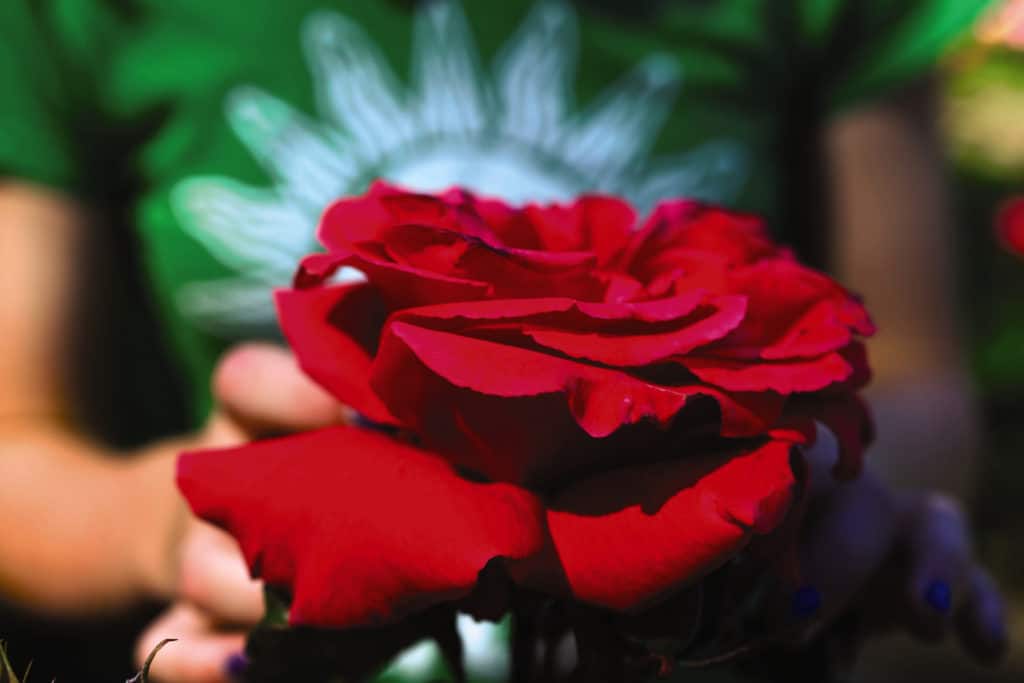
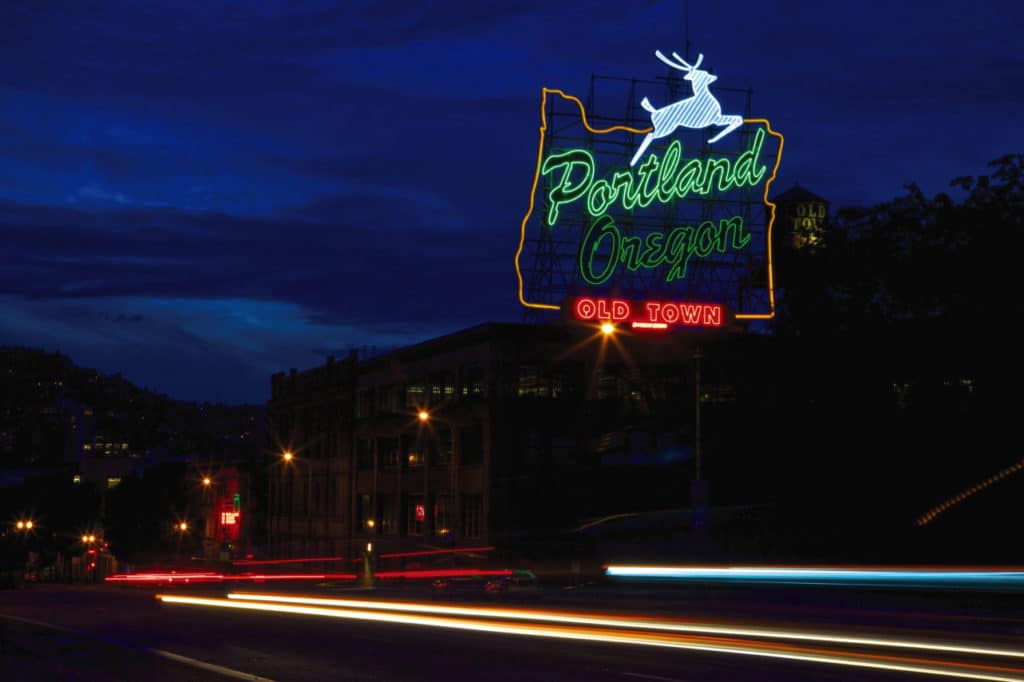
After all this city life, it was time to get cruising. Except for one chart book with rudimentary information on locks and marinas along the route, there were no cruising guides. And from what we had read, few marinas were equipped to accommodate boats of Venture’s size.
In fact, we later learned that few marinas even bothered to have an attendant on duty. VHF and phone calls went unanswered, leaving us to wonder if we’d find dock space at the end of the day. Facing strong currents and unknown bottom conditions, Conklin was rightly reluctant to anchor overnight.
On the way out of Portland our first night, we stopped at the friendly Columbia River Yacht Club, where one of the members shared his local knowledge. Having made the trip himself, he warned of high winds, strong river currents and the need to follow lock schedules.
With eight locks between us and Lewiston, and commercial barge traffic having priority over recreational vessels, we might be limited in the number of miles we could travel each day. Not to discourage us, he added repeatedly. “You’re going to have a great time.”
The gorge, formed by massive floods and gigantic landslides 15,000 years ago, begins 15 miles east of Portland and extends for 85 miles, cutting the river canyon down to 4,000 feet deep. A National Scenic Area, its 300,000 acres are rich with spectacular waterfalls, rainforests, scenic highways and fruit-bearing valleys.

Proceeding east, we got our first glimpse of Oregon’s snowcapped Mount Hood, 50 miles east-southeast of Portland. As we entered the Gorge, there were steep cliffs and high, majestic rock formations. To starboard, on the Oregon side, we passed the area’s iconic waterfall attractions: Latourell, Bridal Veil, Multnomah and Horsetail Falls. Because these sites are not accessible from the river, I had taken a road trip along the Historic Columbia River Highway to photograph them the week before.
Conklin carefully navigated Venture through a narrow cut to Beacon Rock State Park, where we tied up near the 850-foot-high volcanic plug and waited for the scheduled opening of the Bonneville Lock, 5 miles east. A challenging, mile-long switchback trail led to the top of Beacon Rock, where there’s a spectacular view of the gorge.
Right on schedule — every three hours during daylight — the Bonneville gate opens for recreational traffic. Locking through is straightforward, made easy by floating bollards. Within 30 minutes, we were lifted 72 feet and continued cruising upriver, passing under The Bridge of the Gods, named for a natural bridge created hundreds of years ago by a landslide. We stopped for the night in the little city of Cascade Locks, just barely squeezing into a small public marina. Twenty-five-knot winds whipping down the gorge added to the stress of maneuvering in these tight quarters, but Conklin handled the situation well. After a morning photo shoot, we ran upstream to the city of Hood River, known as the windsurfing capital of the world thanks to its prevailing westerlies.

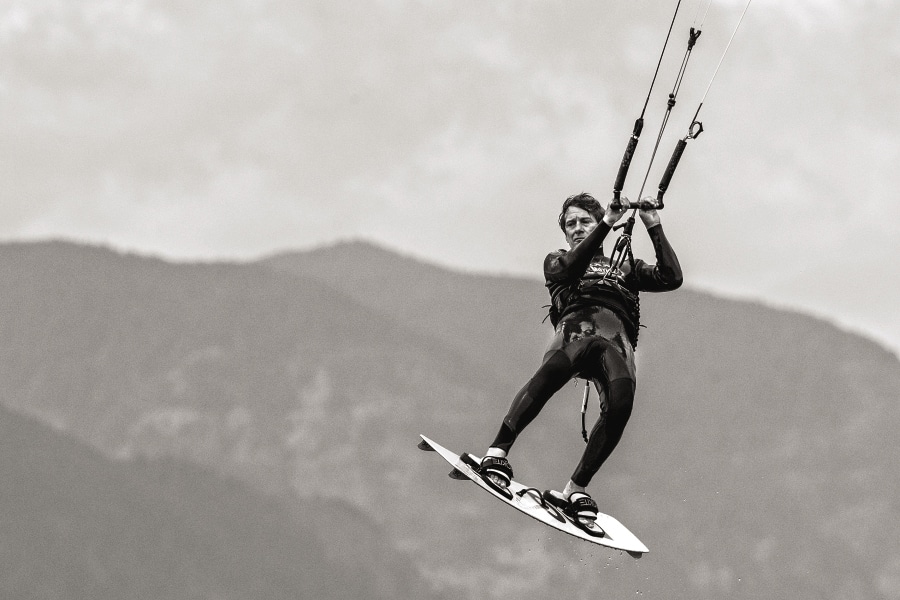
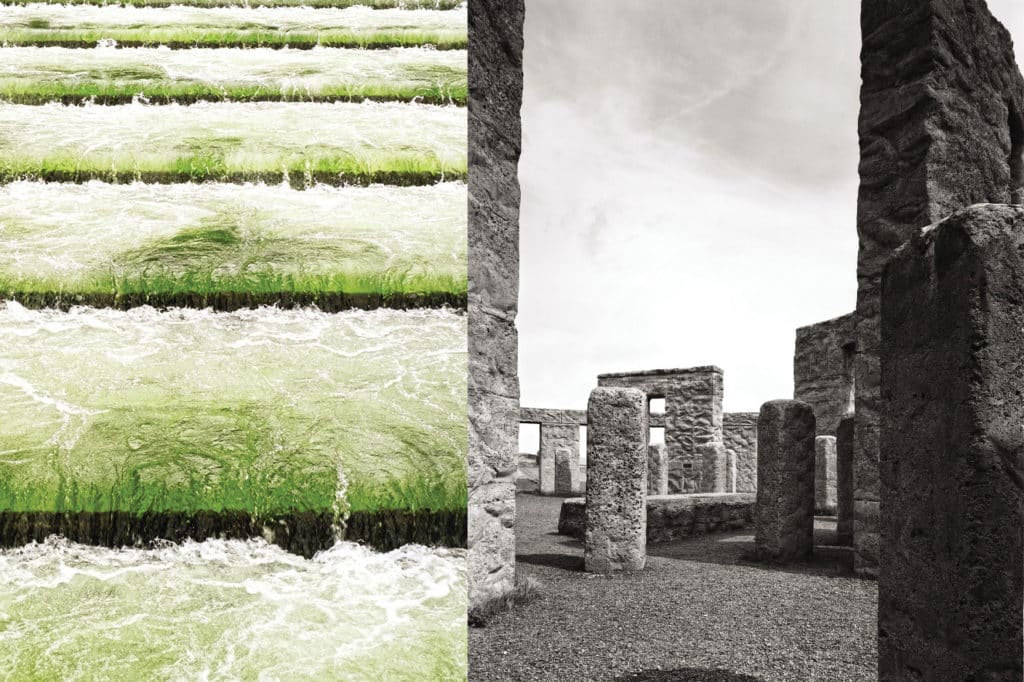
When the winds stiffen to 30 knots or more, the opposing river current can create steep, 6-foot whitecaps, turning a peaceful river cruise into a challenging outing. But windsurfers live for these conditions, and many of these thrill-seekers come here from all parts of the world. We arrived before the wind kicked up, finding room at the public marina, but there was no dockhand, no power and no water.
In Hood River, good restaurants and cafes, fun shops, a historic hotel and public parks are built upon a hill that gently rises above the river. The afternoon sky was soon full of colorful kites connected to harnessed daredevils of all ages, crisscrossing the river at high speeds, launching off the waves and going airborne. We were glad we didn’t try to navigate these waters when these kites were out in full force.
“The scenery was dramatic and desertlike.”
Thanks to the generosity of a Fleming family friend, the three of us borrowed a car and drove the Fruit Loop, 35 miles of fruit orchards, farm stands and wineries. After tasting a local pinot noir, we added a bottle to Venture’s wine locker. It’s 80 degrees in the valley, but when we reached the Timberline Lodge on Mount Hood, the ski lifts were operating and the slopes were busy.
I didn’t understand why I had an eerie, uncomfortable feeling when walking around the outside of the lodge, but then I overheard a conversation: “Hey, did you know this place was used for the opening shots of The Shining?”

During a tour of the Bonneville Dam, we stood atop the turbine generators that produce a total of 1,200 MW of hydroelectric power. We viewed the fish ladders built to allow the salmon to return to spawn in the fall. In a darkened office, human fish counters spend their day tallying the salmon, steelhead and lamprey. The dams along the Columbia and Snake rivers have always been controversial, but the published data suggests an increase in adult Chinook salmon during the past 10 years. And today, these dams generate 40 percent of the nation’s hydroelectric power.
Our last stop in the Gorge was in The Dalles, a town of 13,000 people, 20 miles east of Hood River. The scenery changes strikingly, with steep cliffs, waterfalls and rainforests replaced by arid, sparse rolling hills with little vegetation.
We tied up at the Port of The Dalles Marina, one of the better-equipped facilities on the trip. A walk downtown took me back in time, with Sears appliances lining the sidewalk and a small JCPenney store being a main shopping attraction. Even the cost of a taxi ride seemed nostalgic: $5 took us 7 miles to the Columbia Gorge Discovery Center and Museum, where fascinating exhibits told us even more about the region’s history.
Our voyage continued four more days, turning south at the Snake River and running 140 miles to Lewiston, with overnight stops in Umatilla, Lyons Ferry and Boyer Park, each not much more than a small marina and RV park.
The scenery was dramatic and desertlike. From the beginning of the gorge to Lewiston, Fleming and I had been shooting video and photographs nonstop. There just aren’t many places like it, which is precisely why Fleming chose to explore it.






